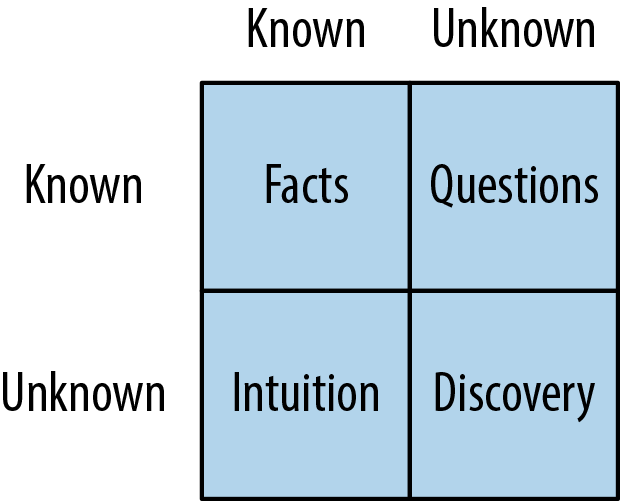Chapter 5. What We Know and What We Don’t
Product development is full of uncertainty. It’s important to separate out the facts from the things that we need to learn. To do this, we explore the knowns and unknowns of our situation, as shown in Figure 5-1.

Figure 5-1. Knowns and unknowns
When kicking off a project, it’s best to begin by identifying what you know to be true about the situation—your known knowns. These are facts that you gather from data or critical requirements from customers. Now not all perceived requirements are necessary, but some of them are. These could be mandated by government regulations, or they could be basic needs that are required to do the job.
You need to separate these items out as facts and to label those that you are unsure about as our known unknowns. Known unknowns are clarified enough that you know which question to ask. They are assumptions that you want to test, data points that you can investigate, or problems that you can identify and explore. You use discovery methods and experimentation to clarify these, turn them into facts, and build to satisfy those facts.
Unknown knowns are those moments when you say, “I feel like this is the right thing to do.” This is intuition from years of experience. Although we should all listen to our intuition, you should also be cautious because this is often where bias thrives. It’s imperative to check and ...
Get Escaping the Build Trap now with the O’Reilly learning platform.
O’Reilly members experience books, live events, courses curated by job role, and more from O’Reilly and nearly 200 top publishers.

